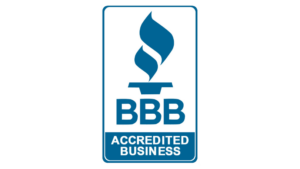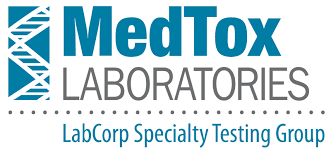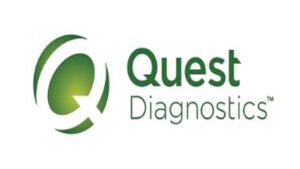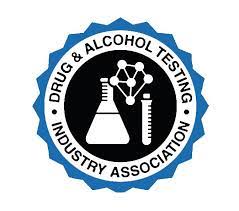Occupational Health Resources
Understanding Drug and Alcohol Testing: Types of Tests, Legality & More
FAQ's
A: Unfortunately, no. There are dozens (if not more) of different drugs that can be included in a drug screen. There is no such thing as a “regular” screen, or a one size fits all screen. Every situation is different, and while one person may need to prove that they aren’t using something like THC or cocaine—another person may need to prove that they aren’t using a prescription for an opioid like Oxycodone, or that they have recently ingested alcohol. Not all drugs are included on every drug screen, and the number of drugs that need to be included in the drug screen are directly related to how much it will cost. To provide a substance abuse screen that meets your specific needs we need to at least know what you have been accused of—or what you would like to test for. Once we know those things we can make recommendations and provide pricing for your test.
A: Although THC is legal in many states now, the decision to allow it or not in a workplace is up to the employer who has ordered your drug screen. In States such as Washington and Oregon—the drugs that are included in employers’ workplace testing policies are determined by the employers, not by the State or the government. If you are an employee covered by Department of Transportation (DOT) regulations, the DOT does not currently recognize THC as an uncontrolled substance and therefore it is not allowed, regardless of what State you live in, or what your reasons are for using it. If you use THC, It is best to ask your potential employer about their drug testing policy regarding THC before you apply for the job so that you know what to expect.
A: Opiates include heroin, codeine and morphine. Opioids include prescription narcotics used to control pain. The most common opioids are hydrocodone (Vicodin), oxycontin, oxycodone and hydromorphone (Dilaudid). Fentanyl and Sufentanyl are also opioids. Although most drug screens include opiates, opioids must be added by request and will normally add to the cost of the test.
A: If you are being tested by your employer and your results are positive due to a prescription, your employer can request a medical review. A physician called a Medical Review Officer (or MRO) who is trained to review drug screen results will call you to go over your results with you. You may be asked to provide proof that your prescription is valid, meaning that it belongs to you, that it is not expired, and that you are using it as prescribed. Based on this interview, the MRO has the authority to “overturn” your results from positive to negative. Keep in mind that if you work in a position that is considered to be safety-sensitive, the MRO may also recommend that you undergo a fitness for duty exam to determine if your prescription could interfere with your ability to perform your job while taking it.
A: Hair is never pulled out of the scalp for a hair drug screen as it is not necessary to have the root of the hair follicle to determine if drugs (or alcohol) have been used. Instead, hair is cut at the scalp and then placed onto a foil strip with the root ends pointing the same direction. The foil is then carefully folded or closed around the hair and placed into a paper envelope along with a copy of the completed chain of custody form for transport to the lab. Hair on the scalp is collected from what is called the “crown” of the head, which is a horseshoe-shaped zone on the top of the back of the scalp, where a hat (or crown) would sit. Hair is taken from this zone because hair in this area is more active in the uptake of nutrients (and metabolites) from the circulatory system than hair from other parts of the scalp. If there is not enough hair on the scalp to collect, hair can be taken from the body. Body hair is collected with an electric razor is also never pulled from the body.
A: Color can affect the accuracy of a hair drug screen. For this reason, hair that has very recently been colored should not be collected. If enough time has passed that uncolored hair has grown above the scalp, the specimen collector may proceed with the collection, but notes must be added to the laboratory chain of custody so that the laboratory knows that the sample may contain colored and uncolored hair. If you have recently colored your hair and you are using your hair test results for a court case, you should check with your attorney before proceeding with the specimen collection.
A: No. Bleached hair is not acceptable for drug screens, as the bleach destroys the hair follicle, making it brittle and easily broken.
A: In order for nails to be used for a drug screen they must be free of colors or gels. Any paint or gel must be removed professionally. Nails that are covered by acrylics can not be used and must be grown out naturally before they can be collected. In order to collect nails for a drug screen, all 10 digits (fingers or toes) must have enough nail grown out so that a minimum of 2mm can be cut from each one. If nails are broken or chipped, even from just one finger or toe—it may not be possible to proceed with the test. During the collection, the specimen collector will open a sterile collection kit and will then use clippers that have been cleaned and disinfected. The collector will ask the donor to cut his/her nails under supervision, clipping them over a clean, white background. Nails are collected from each digit and then placed into a foil container. The tops of the finger or toenails that remain on the hand or foot are then lightly sanded and the powder placed into the same foil container. The specimen is then placed into a specimen bag along with the completed chain of custody and sent to the lab for analysis.
A: All drug screens that are used in court, or for legal purposes, are directly-observed by a same gender specimen collector who will watch the urine pass from the body into the cup. This is required in order to provide proof that the donor has not adulterated their specimen.
The purpose of the Department of Transportation (DOT) Medical Examination is to detect the presence of physical, mental, or organic defects of such a character and extent as to affect the operator's ability to operate a commercial vehicle safely. Drivers will be required to partially disrobe and wear a medical examination gown during the exam. The required DOT exam consists of the elements listed below:
Physical examination - The DOT requires a medical examination be conducted to determine if any of the body's systems would affect the parent's ability to operate a commercial motor vehicle safely. The body systems checked include general appearance; eyes; ears; mouth and throat; heart; lungs and chest (not including breast examination); abdomen and viscera; vascular system; genitourinary system; extremities (limb loss/impairment); spine and other musculoskeletal; and neurological.
Vital signs including Blood Pressure/Pulse Rate -
- Stage 1 - drivers with a systolic blood pressure (BP) of 140-159 systolic and/or a diastolic BP at 90-99 are at a low risk for hypertension-related acute incapacitation and may be medically certified to drive for a one-year period.
- Stage 2 - A blood pressure of 160-179 systolic and/or 100-109 diastolic is an indication for anti- hypertensive drug therapy. The driver is given a one-0me certification of three months to reduce his or her blood pressure to less than or equal to 140/90. Provided treatment is well tolerated and the driver demonstrates a BP value of 140/90 or less, he or she may be certified for one year from the date of the initial exam. The driver is certified annually thereafter.
- Stage 3 - A blood pressure of 180 systolic and 110 diastolic is considered high risk for an acute blood pressure related event. The driver will not be qualified, even temporarily, until the BP is reduced to 140/90 or less and treatment is well tolerated. The driver may be· certified for 6 months and biannually thereafter if at recheck blood pressure is 140/90 or less.
Audiogram - Measures minimum hearing levels required by the DOT. The vehicle operator must not have an average hearing loss in the better ear greater than 40 dB at 500, 1000 or 2000 Hz with or without a hearing aid. Whisper test may be performed in lieu of Audiogram. The vehicle operator must first perceive a whispered voice at not less than 5 feet.
Vision Screen -The DOT requires 20/40 or better in each eye with or without correction. The field of vision must be at least 70 degrees in the horizontal meridian in each eye and can recognize the colors of traffic signals and devices showing red, green, and amber.
Urinalysis – a DOT requirement to determine a patient's protein, blood, and sugar levels. Further testing may be required to rule out any underlying medical problem.
It is the goal of Occupational Medicine to issue your medical certificate, or at least a temporary certificate, on the day of your exam. This cannot be accomplished in some cases without accurate, up to date medical information. To assist us in this goal, please come prepared by following the steps below:
- Bring a complete list of all prescribed and over the counter medications to your exam.
- If you have glasses or contacts, bring them whether you use them for driving or not.
- You should have solid knowledge about significant medical events in your past and if they have
had long-term consequences. This may include heart attack, stroke, diabetes, cancer, major trauma, head injury, mental health issues or other significant events.
- You should be able to provide a list of all past surgeries and their dates.
- Diabetics must bring in a Hemoglobin A1c test from within the last 90 days that is <=10.0. Insulin users will require additional documentation including form 5870 to be completed. • You should know the date of any previous head injury and if there were any after-effects from it (seizures, depression, behavioral disorders). You should be aware if you are on medications from that incident.
- Knowledge of treatment for sleep apnea must be disclosed. Sleep apnea patients should bring in their annual documentation of usage or clearance.
- Disclosure of any past cardiovascular incidents with dates (heart attack or surgeries, stroke or mini stroke) is mandatory, no matter how far in the past it occurred. Cardiac patients should bring with them copies of periodic testing including exercise treadmill testing (stress testing).
- If you have had a recent surgery or medical incident, you will save time by having a note from your provider stating you are able to return to driving a commercial vehicle or school bus. • For drivers with high blood pressure, your blood pressure must be under 140/90 to pass the exam. Your certificate will be good for a maximum of one year if you are being treated for hypertension with medication.
The above is a list of the most common health issues we see in our clinics, but this does not include all possible issues. Please call if you have questions prior to your appointment.
Tips for people with high blood pressure concerns:
- Keep your diet light the night before and drink plenty of water. Avoid high salt/sodium.
- Avoid alcohol the night prior to exam, it does not help to lower your blood pressure.
- Make sure you take all your medications as prescribed including any morning medications.
- Avoid caffeinated beverages the day of your exam. Avoid nicotine products at least 2 hours prior to your exam.
Knowledge Base
As a part of the medical certification process for insulin treated diabetes mellitus (ITDM) individuals, the Federal Motor Carrier Safety Administration requires that the Insulin Treated Diabetes Mellitus Assessment Form (ITDM), MCSA-5870, be completed by the ITDM individual’s Treating Clinician attesting that the individual has a stable insulin regimen and properly controlled diabetes. ITDM individuals are required to provide the ITDM Assessment Form, MCSA-5870, to the Certified Medical Examiner within 45 days of completion by the Treating Clinician.
A Notice by the Coast Guard on 12/01/2009
The CG-719 K/E form should be used only by mariners seeking an entry level merchant mariner credential. This form is limited to applicants for the following rating endorsements: Ordinary Seaman, Wiper, or Steward's Department (food handler). The CG-719K form should be used for all other endorsement applications.
Here's information regarding the Vision Evaluation Report used for Monocular Vision. Form MCSA-5871















